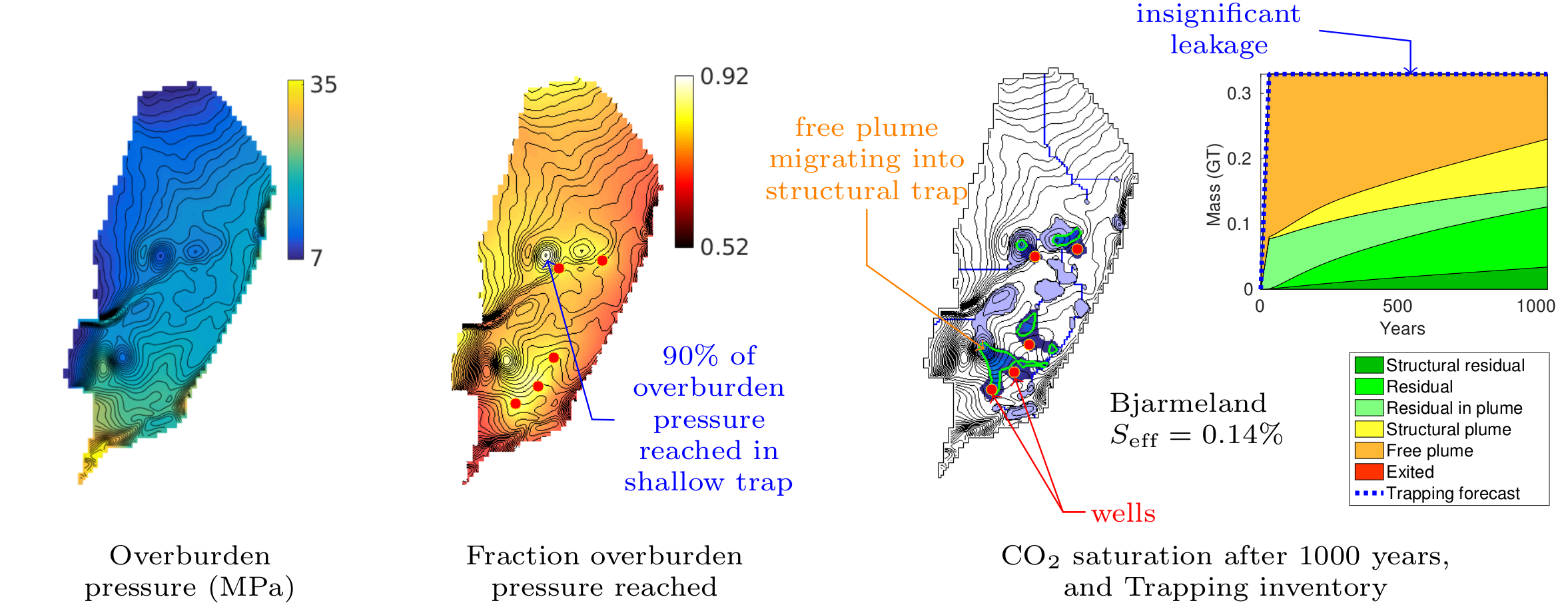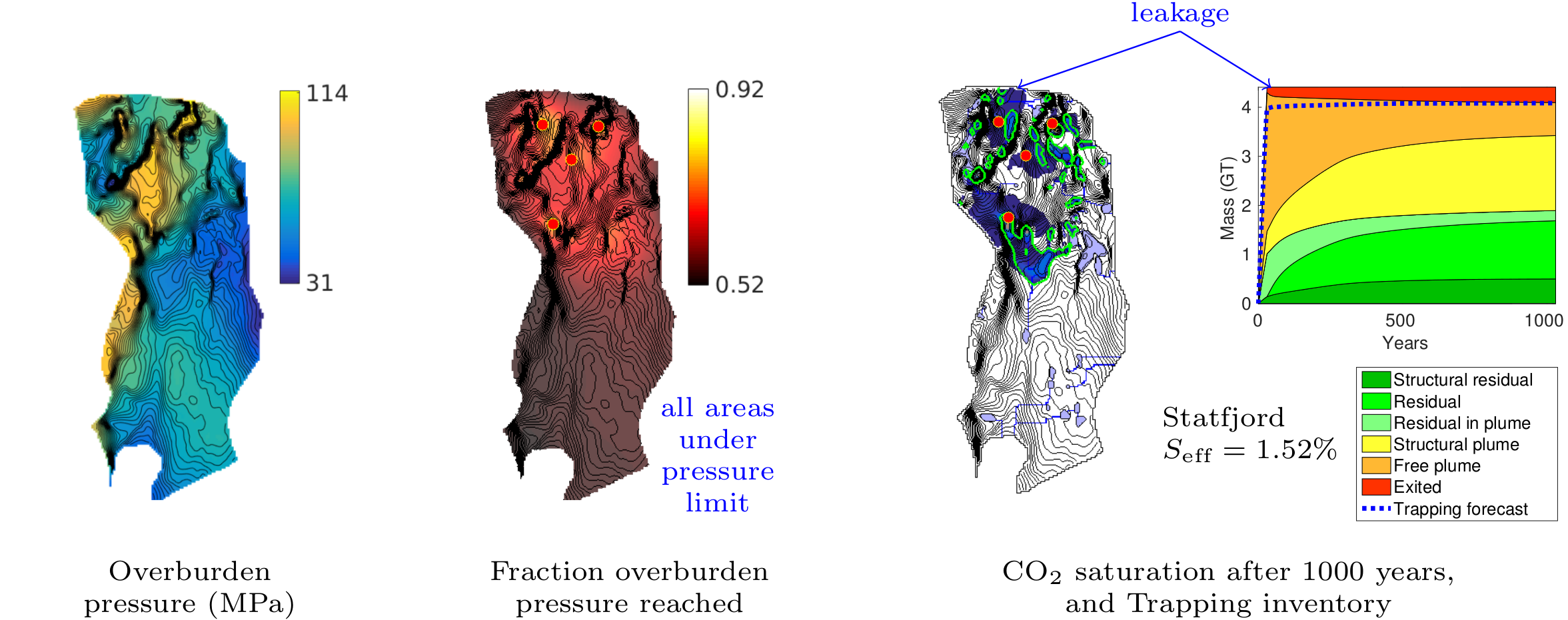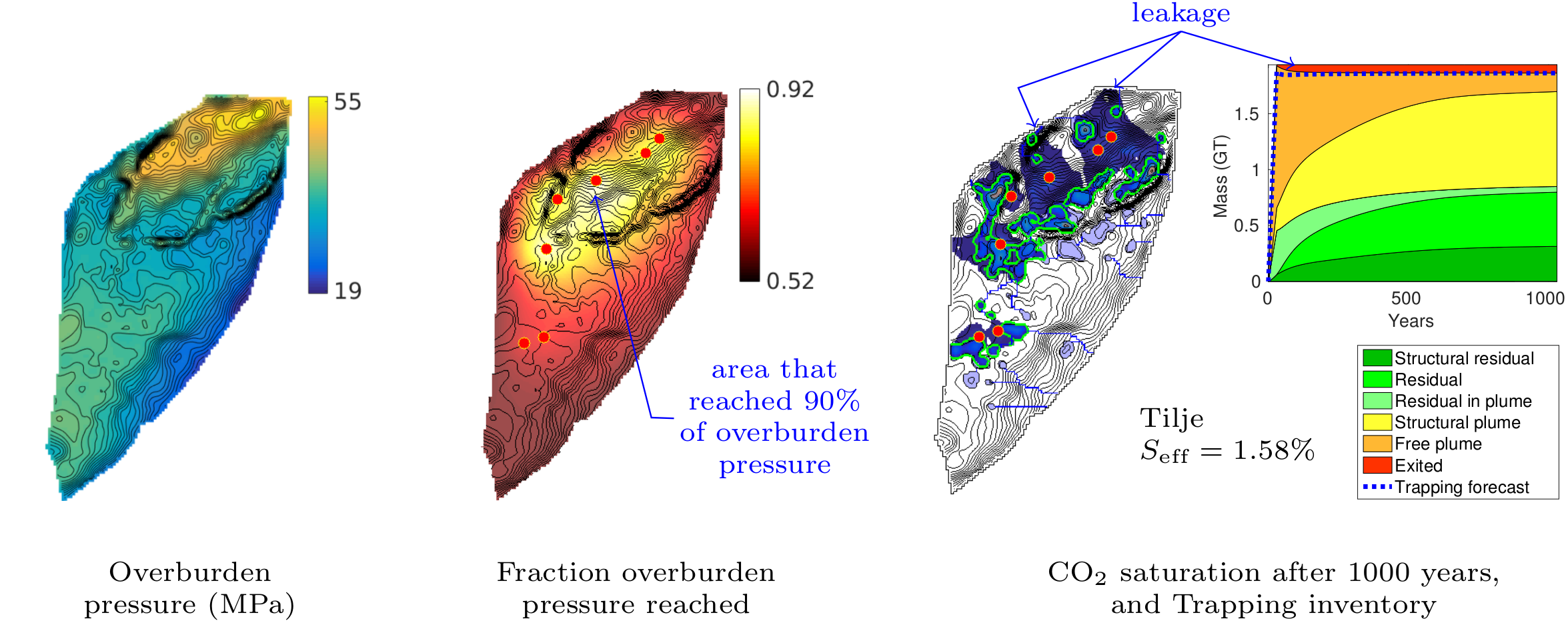|
Categorizing CO2 Storage Potentials
We use mathematical optimization to suggest practical injection strategies and storage efficiencies of large-scale saline aquifers. The optimal injection rates are limited due to excess leakage and/or pressure buildup, which is forecast or simulated to occur, respectively. Based on these limitations, we can categorize the formation as "leakage-constrained", "pressure-constrained", or constrained in terms of both leakage and pressure. The following three formations demonstrate each possible category. Their optimal injection strategies were obtained using a 30-year injection period and a leakage penalty factor of 5. More details of these storage examples can be found in [1].
Literature
|
||||||||||||||||||||||||



